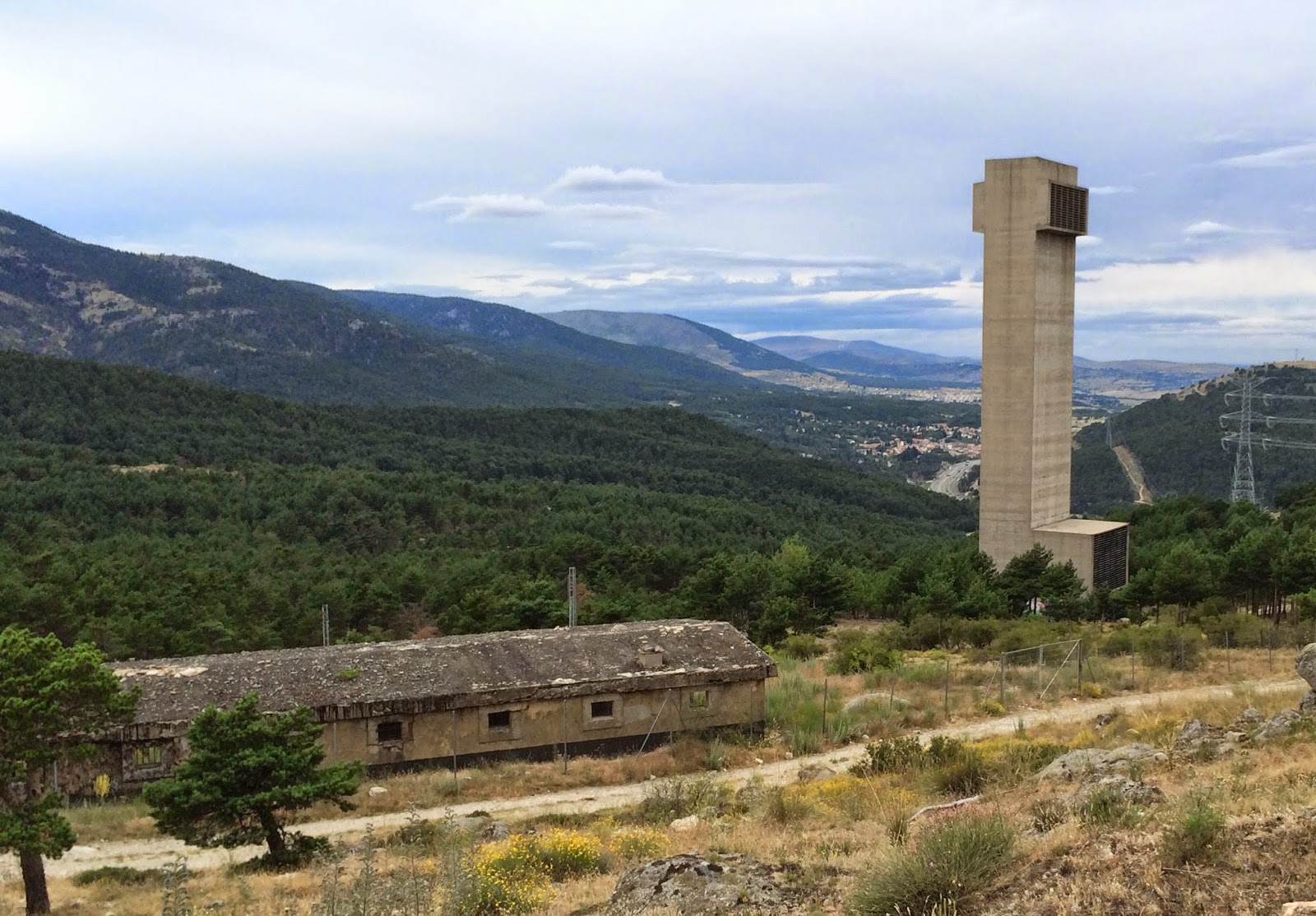(Continued from previous post)
We finished the visit to the La Sevillana position looking into some of the buildings that were used as accommodation to the Nationalists troops. The first two photos are from a building erected just behind the observation post bunker. The construction seems to have been of very good quality with a wide access door and a row of windows.
Given its size we calculated that it could shelter a probably a full section (around 20 men) or even more.
Another smaller shelter stands nearby, an officer's or NCOs lodging place?
In the counter-slope and overlooking the road to San Rafael there´s a major and well constructed building with capacity for a full company! The site is surrounded by a fence and the building is not accessible.
(Note: the tall construction tower in the first photo is the ventilation stack of the toll road tunnel built under the mountain)
We also discovered this other shelter following a much deteriorated trench track behind the main position of La Sevillana, that seems to be still in use by excursionists.
Once we finished exploring this area, we crossed the Guadarrama-San Rafel road and took a wide dirt track leading to the right position of the defensive system. For some reason this area was only lightly guarded, with some scattered defensive positions still visible, remnants of tenche lines and a very well preserved observation bunker, but no trace of shelters whatsover.
 |
| Bunker overlooking the road between San Rafel and Guadarrama |
 |
| Observation post |
This observation post lacked the typical cupola with windows, but had a tower with a major round hole in the roof; we concluded that it was probably used to fit some sort of periscope.
Nonetheless, our objective was to reach the peak of Cabeza Líjar also known as the Loma de los Falangistas (Falangistas’ Hill). According to the guides and blogs that I used to prepare our visit, it is one of the most outstanding places in the area.
What we did not realize is that the peak elevates over 300 meters above the El Alto del León level which means a veeeeeeery steep slope to climb. You have to be a man of strong determination to pursue this objective: it took us around 45 minutes of hard cross-country climbing to reach the bloody summit... but I must say it was truly worthwhile!
 |
 |
| A heroes feat!: reaching the stonewall indicating the perimeter of the Cabeza Líjar position |
Here we found a quite impressive observation post excavated in the rock at the edge of a cliff and almost impossible to discover by any troops downhill or in any of the surrounding mountains. The view was breathtaking, dominating both, the last formations of the mountain chain that separates Madrid from Castilla and the flat valley leading into Madrid.
 |
| On top of the observation bunker |
 |
| Rear entry access to the bunker |
 |
| Upper part of the observation post and inner wooden stairs |
 |
| Defensive position of Cabea Líjar |
It was then that I understood the strategic importance of breaking through Guadarrama: El Alto del León was the last defensive position and once beaten any resistance it was only flat country until reaching Madrid.
 |
| The right view: the cross of the Valley of the Fallen |
 |
| Flat country and Madrid loomingin the horizon |














Some really great photos!
ReplyDeleteFantastic pictures!!! Thank you a lot!
ReplyDeleteSecond great report. Lots of inspiration fro SCW games.
ReplyDeleteReally interesting articles, thanks for providing the inspiration.
ReplyDeleteGreat photos. Is there much preservation going on there?
ReplyDeleteAbsolutely nothing! No single administration at the local, regional or national level seems to care a damn about these remnants. It's a miracle that they have survived after so many years in such a good condition. Amazingly enough, the national electricity grid company decided to use the site to build an interconnector between Madrid and the norther regions (you may see some HV cables hanging over the bunkers in some of the photos) and then we had the massive reforestations in the 60s and 70s that did not respect the site (now you have pintrees grown over the former trenches line).
DeleteA shame, no doubt but the Spanish administration seems to have little sensitivity to the caring of the fomer battlefields, and not only those of the SCW but of previous conflicts (Napoleonic wars or the Reconquista)
The Sapnish administration never care for history The Law of Historical Memor has been stopped dead by the actual government.
ReplyDeleteBest regards
Rafa